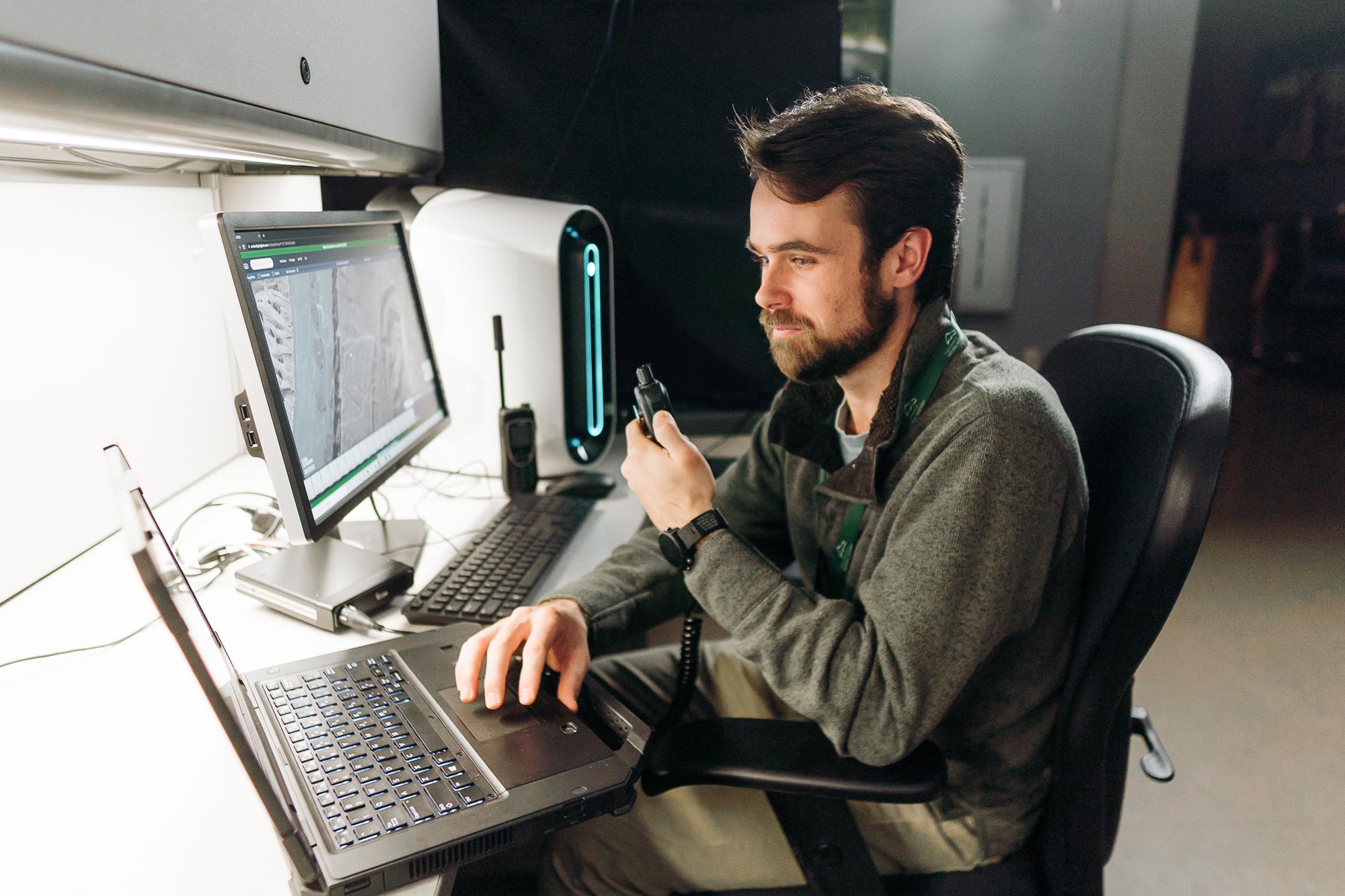Thousands of public monuments, museums, religious buildings, archaeological sites and other culturally significant structures are in danger of being destroyed in Ukraine due to the Russian invasion.
University of Virginia alumnus Hayden Bassett is leading a team of specialists who are monitoring and mapping Ukraine’s cultural heritage and seeking ways to encourage its preservation.
In the near future, Bassett will also join the U.S. Army in the reactivated “Monuments Men” – units formed in World War II to work on saving endangered cultural sites and artifacts. When the Army deploys the specialists, Bassett will be commissioned into the Army Reserves as a “heritage and preservation officer” under the U.S. Army Civil Affairs and Psychological Operations Command.
Bassett, who majored in archaeology and minored in architectural history at UVA, earned a Ph.D. from the College of William & Mary, and currently is assistant curator of archaeology at the Virginia Museum of Natural History, as well as director of the museum’s Cultural Heritage Monitoring Lab. There, he works on monitoring threatened cultural heritage sites in Ukraine and was featured in a recent New York Times article and on BBC Radio.
UVA Today corresponded with Bassett to find out more about this work.
Q. Can you describe what is in danger of being lost (or what has been lost already) in Ukraine?
A. This conflict is being fought in and around urban areas. For Ukraine’s principal towns and cities, we are seeing significant damage to the dense concentrations of cultural heritage that define these areas. We have confirmed impacts, such as the complete destruction of a museum in Ivankiv [at the end of February], and are seeing far more in the way of potential impacts, which we are continuing to document in the coming days and weeks.
Q. What kind of places are you monitoring and mapping that ideally should be preserved?
A. Our team has developed a countrywide geospatial database of cultural property for Ukraine. This includes the country’s churches and cathedrals, mosques, temples, museums, public monuments, cemeteries, art centers, archives, burial mounds, archaeological sites and more.
We use satellite technologies to monitor these sites – for some, as frequently as every six hours. This allows us to identify impacts as quickly as possible. Damage to cultural property often compounds with time, and delays in the identification of these impacts typically translate into further destruction and deterioration. We work closely with nongovernmental organizations, universities, government agencies and other partners on immediate and long-term responses.
Q. Can you say a little more about what your team’s work will be?
A. First and foremost, our goal is to identify and document impacts. Second, to the courageous Ukrainian citizens physically safeguarding their cultural heritage, what is needed most is information – when and where cultural properties are impacted or vulnerable. By providing this, our goal is to be in a position to immediately assist ground efforts when it is safe for people to stabilize and restore heritage sites.
Many sites, historic buildings and collections become vulnerable to loss through rapid deterioration or human activities once exposed to the elements. In doing the monitoring and identification now, in the moment, our objective is to minimize the time between damage and the eventual response.
Q. Have you ever been to Ukraine? Have you gone to other places to analyze artifacts or sites?
A. I have not been to Ukraine. A key member of my team is, however, a specialist on the cultural heritage of Ukraine and Russia.
I have personally done archaeological fieldwork in Kenya, Djibouti, Tanzania, Bahrain, Jamaica, Bermuda, Barbados and throughout the U.S.
Q. Any word on when the U.S. Army might call up this reserve unit?
A. All I can say is “soon.” One thing to note is that rather than a unit, the Army Monuments Men and Women will actually be spread out across different geographic commands, and will be integrated into the capabilities of other units. There are actually several officers who have been in this role since 2019.
Q. When you get deployed, will you go to Fort Bragg or somewhere else, and on to Ukraine eventually?
A. The work of the modern Monuments Men and Women includes identifying when and where protecting cultural heritage is a concern in conflict and natural disaster, training other service members, advising military leadership, and deploying to safeguard cultural heritage on the ground. When and where those activities occur is largely determined by global events and military decision-making. Therefore, I cannot yet say where a monuments officer will be at any future moment. They will be where they are needed most.
Q. How did your college experience influence your continued study and career choices? What professors or courses come to mind?
A. While my focus at UVA was archaeology, I had the opportunity to study cultural heritage, broadly defined, in both the humanities and sciences. This included the cultivation of technical skills, and the understanding of social and historical context and its relationship to the politics and roles of cultural heritage in society – all through coursework and fieldwork opportunities.
I can attribute a great deal of my scholarly development and research approach to Louis Nelson, professor of architectural history, who continued to serve on my dissertation committee at W&M, and who I am proud to call a close colleague today. I also worked closely with Jeff Hantman, Fraser Neiman and Adria LaViolette in the Department of Anthropology, all important professors to me from my time at UVA.
Media Contact
Article Information
March 10, 2022
/content/alumnus-poised-help-save-ukraines-cultural-heritage-currently-under-fire

